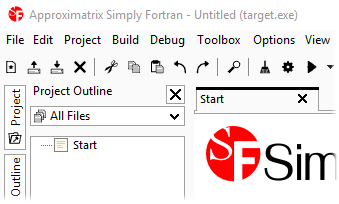
Here is a program that finds and prints to a file the divisors of an integer The next write command will write to a new line. (*,5)", except that in the former output is directed to file number 7, and inĮach execution of a write command writes to a single line in a file. The "write (7,5)" command works exactly like the similar command "write

Write (7,5) "The solutions are ", x1, " and ", x2 The second to the label of the format statement:

The following, the first number in "write (7,5)" refers to the file number and Statements to write to a file this gives you better control of formatting. You can also use write statements in conjunction with format Serves as a line feed, skipping a line in the file numbered 7 before the next The command "write (7,*)" on a line by itself Produce exactly the same output, except that the first writes to the screenĪnd the second to file number 7. Write (7,*) "The solutions to the equation are : ", x1, Print *, "The solutions to the equation are : ", x1, x2 Works like a print * command, except that data is written to the file Write command is used to write data to a file. Possible memory problems and to increase efficiency. However, in programs handling large amounts of data itĬan be prudent to close files before the end of the program in order to avoid It is not necessary to close files Īll files will automatically be closed when an end or stop The first of these commands closes the file numbered 5, while the secondĬloses the three files numbered 1, 3, and 8. Is used to close one or more files - examples are (So don't mistakenly give the file the same name

If the named file does not already exist, Fortran will create it if it doesĮxist, Fortran will replace it. If you do not specify a drive or directory path for a file, or if you specify the same drive upon which GNU Fortran is installed but without a path, GNU Fortran will by default assume the file is located on the same drive and in the same directory from where Fortran is running. Do not put a space on either side of the colon after the drive letter. Also, in specifying a directory path for a file, you must use double backslashes instead of single ones. There is one thing to remember about numbering a file - youĬannot use the number 6, as GNU Fortran reserves that number to refer to the Several files can be open at once, but each must have aĭifferent number. Open (unit = 5, file = "h:\\results\\primes")įortran uses the unit number to access the file with later read and Used to refer to the file, and instead of name you insert the name of theįile. In place of number you insert a positive integer (but not 6) to be Used to open files - that is, it makes files available so that Fortran can read Putting data intoįiles - both for input and output - is a more leisurely and less error-prone

Tedium, while too much screen output has similar consequences. Too much keyboard input during the run of a program leads to mistakes and Sometimes it is convenient in a Fortran program to use files forĪccessing or storing data - especially when large amounts of data are involved. It will also improve your debugging skills.Fortran Lesson 7 FORTRAN LESSON 7 Lesson Topics It will be definitely good if you choose to see your output message through debugging(Step Over).
#Simply fortran window closes code
You can use the code which I've given below Go to Menu Bar and toggle ' show output window'Īlternatively you can append a C++ code that waits for an event to happen, so that you may get enough time to watch your Output. You've 3 ways, choose that suits you better You don't have any problem actually, neither in your Codeblocks Application nor in your code, But codeblocks doesn't wait for you to close its console window manually, It automatically does it.


 0 kommentar(er)
0 kommentar(er)
